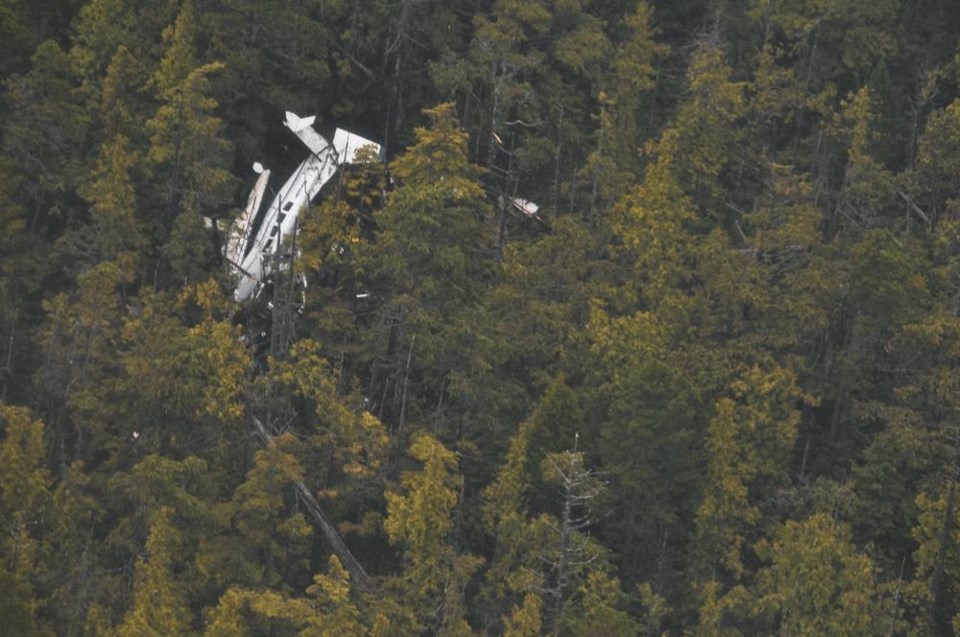A float plane that crashed on an uninhabited island north of Port Hardy two years ago, killing four people, took off despite a poor weather forecast near the destination, says a Transportation Safety Board report.
The Seair Seaplanes chartered flight, with nine people on board, was bound for Ole’s Hakai Pass Fishing Lodge on Calvert Island when it crashed around 11 a.m. on July 26, 2019.
The pilot’s attention, vigilance and general cognitive function were likely affected by fatigue, said the TSB report, noting he had worked 27 of the 28 days before the crash, and sometimes worked during the night with minimal rest periods.
The Cessna 208 Caravan float plane, which had departed from Vancouver airport’s water aerodrome, struck the heavily forested hills of Addenbroke Island, about 100 kilometres north of Port Hardy, killing the pilot and three passengers and injuring five others. The aircraft was destroyed.
The TSB report identified several factors that led to the crash, including the pilot’s fatigue, the decision to take off despite poor conditions and the role group dynamics played in that decision.
Four Seair flights were scheduled to fly to B.C.’s central coast, including three to the fishing lodge. All of the flights were delayed due to poor weather conditions at the destination, but eventually went ahead in an order that differed from the original schedule.
A senior operational staff member decided to take off ahead of the other pilots. Another pilot, who had never flown to the area, declined to fly due to weather concerns, and was replaced by the chief pilot. The pilot who died was aware of these decisions, the report says.
When the pilot encountered poor weather conditions, he continued the flight in reduced visibility without realizing how close the plane was to the rising terrain of Addenbroke Island. The decision to continue northbound was likely influenced by weather observations from another pilot heading southbound, the report says.
The investigation notes that individuals who perform higher-risk activities with few negative consequences may become desensitized to risk. “The risk can increase further when, as group values shift, higher-risk decisions become normal and accepted within a given group,” the report says.
The plane was equipped with a system that provides visual and audio alerts to warn a pilot of threatening terrain on the projected flight path, but it was configured in a way that made it ineffective in this case, the report found.
As a result of the crash, Seair contracted an aviation consulting company to review its operations and maintenance. The review on Aug. 21, 2019 included interviews with staff to understand communications issues within the company and suggested areas for improvement.
The company updated the standard operating procedures for the aircraft to highlight the limitations of the autopilot system and to define acceptable use of personal electronic devices in the cockpit.
The pilot killed in the crash was identified as Al McBain, who had worked for Seair since 2001 and had 8,500 total flying hours.
He was a great brother and a “friendly, jovial person,” whose whole life was about flying, said his sister, Nathalie Chambers, a Saanich councillor. Chambers said Canada’s charter float plane industry requires more safety oversight to protect passengers and pilots.
Others killed included a man in his 40s from South Carolina, a man in his 70s from Washington state and a man in his 60s from Germany.



